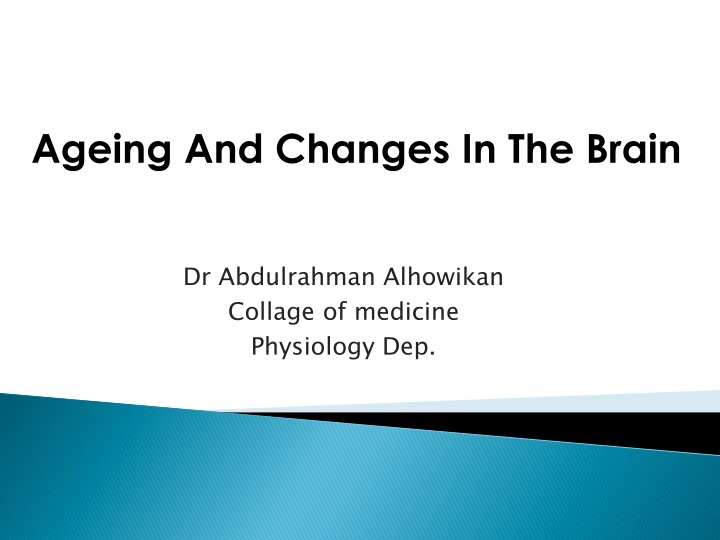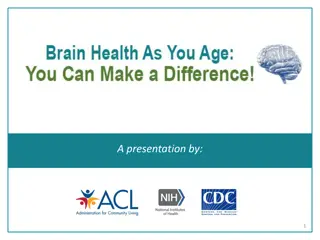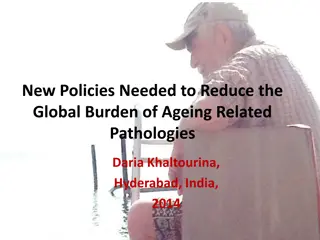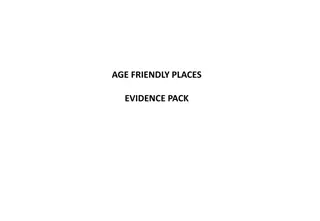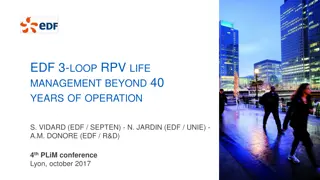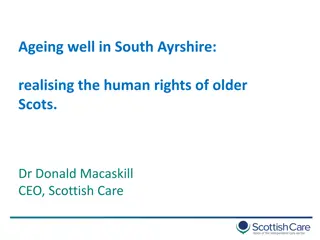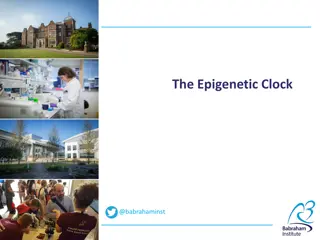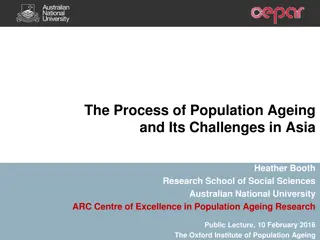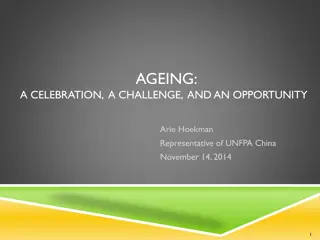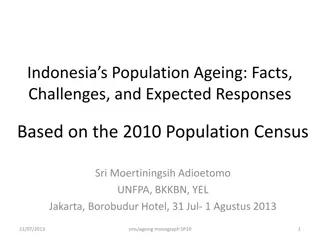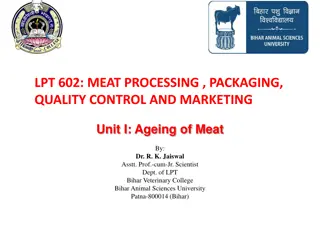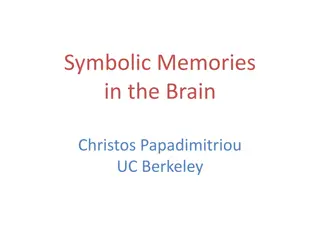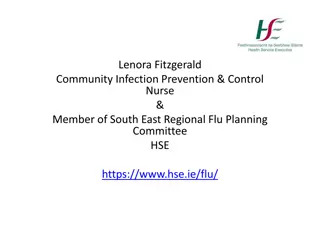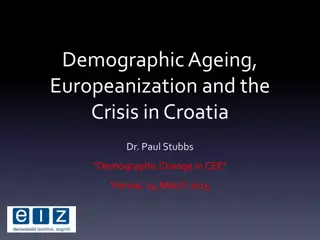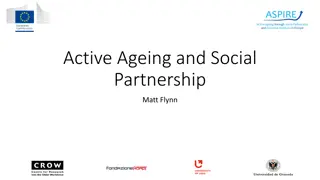Ageing And Changes In The Brain
Ageing is a natural process that brings about various changes in the body and brain. These changes can impact memory, physical appearance, and overall health. Understanding the different types of ageing - such as universal ageing, probabilistic ageing, chronological ageing, social ageing, and biological ageing - can help individuals navigate the challenges that come with getting older. This article delves into the definition of ageing, theories used to explain it, body and brain changes, memory decline, and more.
Download Presentation

Please find below an Image/Link to download the presentation.
The content on the website is provided AS IS for your information and personal use only. It may not be sold, licensed, or shared on other websites without obtaining consent from the author.If you encounter any issues during the download, it is possible that the publisher has removed the file from their server.
You are allowed to download the files provided on this website for personal or commercial use, subject to the condition that they are used lawfully. All files are the property of their respective owners.
The content on the website is provided AS IS for your information and personal use only. It may not be sold, licensed, or shared on other websites without obtaining consent from the author.
E N D
Presentation Transcript
Ageing And Changes In The Brain Dr Abdulrahman Alhowikan Collage of medicine Physiology Dep.
Objectives 1. Definition of Aging 2. Theories and terms Used 3. Body Changes in Aging 4. Brain Changes in Aging 5. Memory Changes in Aging 6. Carotid Hypersensitivity 1. Definition of Aging 2. Theories and terms Used 3. Body Changes in Aging 4. Brain Changes in Aging 5. Memory Changes in Aging 6. Carotid Hypersensitivity
Most popular definition : decline in intrinsic physiological function, leading to an increase in age-specific mortality rate in survival rate) and a decrease in age specific reproductive rate mortality rate (i.e., a decrease decrease in age- - specific reproductive rate Aging is not a disease; however, the risk of developing disease is increased dramatically, as a function of age. the risk of developing disease is increased, often
Changes in appearance (gradual and weight A lower metabolic rate Longer reaction times Declines in certain memory functions Declines in sexual activity and in women menopause A functional decline in audition, olfaction, and vision Declines in kidney, pulmonary, and immune functions, declines in exercise performance Changes in appearance (gradual reduction in height and weight loss due to loss of muscle & bone mass) A lower metabolic rate Longer reaction times Declines in certain memory functions Declines in sexual activity and in women menopause A functional decline in audition, olfaction, and vision Declines in kidney, pulmonary, and immune functions, declines in exercise performance reduction in height loss due to loss of muscle & bone mass) (Craik and Salthouse, 1992; Hayflick, 1994, pp. 137-186; Spence, 1995
UNIVERSAL AGEING: people share PROBABILISTIC AGEING: may happen to some not others( diabetes). CHRONOLOGICAL AGEING: old a person is ( SOCIAL AGEING: how people should act as they grow older BIOLOGICAL AGEING: physical state as it ages UNIVERSAL AGEING: age changes that all people share PROBABILISTIC AGEING: age changes that may happen to some not others(Eg diabetes). CHRONOLOGICAL AGEING: referring to how old a person is (number of years of life) SOCIAL AGEING: society's expectations of how people should act as they grow older BIOLOGICAL AGEING: an organism's physical state as it ages age changes that all age changes that Eg type two type two referring to how society's expectations of an organism's
Genetic Cellular Theories: the life span of Mammals is under genetic control. So it find that !! Humans with long lived parents and grandparents live an average of 6 years longer than those whose parents die before the age of 50. Human body cells grown in tissue cultures are able to divide only about 50 times, after which they age and die. The reproductive capacity of cells taken from old animals is even more limited; these cells can undergo only about one half as many divisions as those obtained from young animals. Genetic Cellular Theories: So it find that !!
Oxidative stress: Accumulation of oxidative damage to DNA, proteins, and lipids interferes with normal function and produces a decrease in stress responses (imbalance between the production of (free radicals) and antioxidant Mitochondrial dysfunction: A common deletion in mitochondrial DNA with age compromises function and alters cell metabolic processes and adaptability to environmental change Oxidative stress: Mitochondrial dysfunction:
Hormonal changes: The decline and loss of circadian rhythm (routine) in secretion of some hormones produces a functional hormone deficiency state. Eg (thyroid gland-- control metabolism, Insulin energy) Telomere shortening: Hormonal changes: Telomere shortening: Telomeres form the ends of human chromosomes distinguish chromosome ends from broken DNA Aging is related to a decline in the ability of cells to replicate Defective host defenses -Host defenses that protect against infection include natural barriers (eg, skin, mucous membranes -The failure of the immune system to respond to infectious agents Defective host defenses:
Accumulation of senescent cells: Renewing tissues become dysfunctional through loss of ability to renew They accumulate in quite large numbers in just one tissue Normal cells Senescent cells
Aging and nervous system: Enlargement of the ventricular system of brain (contain spinal fluid) : as people get older, the volume of the ventricles increases. It is thought that this enlargement occurs because cells surrounding the ventricles are lost. Widening of sulci (the grooves) on the surface of the brain. Reduced brain weight and brain volume: these changes are probably caused by the loss of neurons. Reductions in the size of many areas of the cerebral cortex have been reported. Aging and nervous system:
Aging and nervous system cont..: Neurological disorders: brain disorders such as Alzheimer's disease, Parkinson's disease and stroke are more common in the elderly. Cerebral atrophy shows up on CTs and MRI scans Reduced Sympathetic nervous system activity Reduced Neurotransmitter levels Changes in sleep patterns Abnormalities in EEG tracings Increased risk of stroke Aging and nervous system cont..:
sulci (the grooves) on the surface of the brain. ventricular system of brain Cerebral atrophy
located in the carotid arteries in the neck. The carotid sinus contains a sensory organ, which, when stimulated by pressure within the vessel, causes slowing of the heart rate and dilation of blood vessels in the body Provoked by wearing a tight collar, looking upwards or turning the head Carotid sinus syndrome occurs in the elderly and mainly results in bradycardia. Most common etiologies of atrioventricular block Do not massage both carotids simultaneously.
Touch: Age tactile stimuli may be due to: Loss of various receptors (for example, Meissner's Reductions in the number of sensory fibers innervating the skin. Touch: Age- -related changes in the ability to perceive tactile stimuli may be due to: Loss of various receptors (for example, Meissner's and Reductions in the number of sensory fibers innervating the skin. related changes in the ability to perceive and Pacinian Pacinian corpuscles) in the skin. corpuscles) in the skin.
Vision: Lens: elasticity of the lens elderly individuals have trouble focusing their eyes. Cornea and more flat. This may cause images to appear color sensitivity to green, blue Pupil: alter the ability of older people to dilate the pupil By age 70, the pupil may not dilate easily in low lighting conditions (Hampton, 1997). Vision: Lens: proteins in the lens change with age and the elasticity of the lens is reduced. Therefore, many elderly individuals have trouble focusing their eyes. Cornea: the cornea may become less transparent and more flat. This may cause images to appear distorted or blurred. There may also be a color sensitivity to green, blue and violet shades. Pupil: changes in the autonomic nervous system alter the ability of older people to dilate the pupil. . By age 70, the pupil may not dilate easily in low lighting conditions (Hampton, 1997). proteins in the lens change with age and the is reduced. Therefore, many : the cornea may become less transparent distorted or blurred. There may also be a loss of loss of and violet shades. changes in the autonomic nervous system
Vision Cont.. Cataracts: decrease the amount of light that passes through the lens and can bend National Eye Institute estimates that more than 50% of Americans age 65 years and older have a cataract. Retina: contains fewer rods in older individuals. Vision Cont.. Cataracts: cloudy areas of the lens. Cataracts decrease the amount of light that passes through the lens and can bend lig National Eye Institute estimates that more than 50% of Americans age 65 years and older have a cataract. Retina: the peripheral retina is thinner and contains fewer rods in older individuals. cloudy areas of the lens. Cataracts lig abnormally. The abnormally. The the peripheral retina is thinner and
Olfaction: Changes in the nasal mucosa, ( (which separates the nasal cavity from the brain )and air passages may contribute to impaired The neurons located deep in the brain's medial temporal lobe ) and other brain areas involved with smell may be individuals. Olfaction: Changes in the nasal mucosa, cribriform cribriform plate plate )and air passages may contribute to impaired odor recognition. The amygdala odor recognition. amygdala ( (is an almond-shape set of and other brain areas involved with smell may be damaged in older individuals. damaged in older
Hearing Loss: Ear wax build up. Stiffening of the tympanic membrane (eardrum). Atrophy of small ear muscles. Degeneration of hair cells and support cells in the cochlea. Stiffening of basilar membrane. Loss of nerve fibers leading from the cochlea to the brain. Loss of neurons in auditory areas of the brain. Hearing Loss: Ear wax build up. Stiffening of the tympanic membrane (eardrum). Atrophy of small ear muscles. Degeneration of hair cells and support cells in the cochlea. Stiffening of basilar membrane. Loss of nerve fibers leading from the cochlea to the brain. Loss of neurons in auditory areas of the brain.
Disorders of the Sense of Taste: Medications that the elderly need. Disorders of the Sense of Taste: Medications that the elderly need. Reductions in the number of taste Reductions in the number of taste buds. buds. taste buds taste buds Dentures ( artificial teeth) that cover taste buds on the soft palate. Dentures ( artificial teeth) that cover taste buds on the soft palate.
Alzheimers disease: is defined as premature aging of the brain, usually beginning in mid-adult life and progressing rapidly to extreme loss of mental powers similar to that seen in very, very old age. Alzheimer s disease:
Features: (1) an amnesic ( loss of memory) or type of memory impairment (2) deterioration of language ( some difficult of talking ) (3) visuospatial deficits. Features:
Erectile dysfunction (ED) is not considered a normal part of the aging process. Nonetheless, it is associated with certain physiologic and psychological changes related to age. survey of men between the ages of 40 and 70, 52% of responders reported some degree of ED. Complete ED occurred in 10% of respondents, moderate ED occurred in 25%, and minimal ED in 17%
Thank you Thank you
